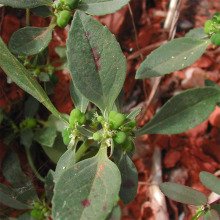Climate Matching Map
| Attachment | Size |
|---|---|
| climatematch-euphorbia_dentata-oregon-20250305.pdf (1.12 MB) | 1.12 MB |
1. Question 1
2. Question 2
3. Question 3
4. Question 4
5. Question 5
(Euphorbia oblongata), Mytle spurge (Euphorbia myrsinities), and Leafy spurge (Euphorbia esula).





